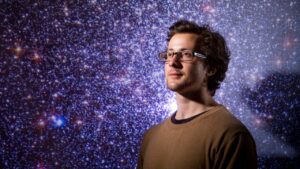Add to Calendar
When:
May 27, 2021 @ 16:00 – 17:00
Europe/Copenhagen Timezone
2021-05-27T16:00:00+02:00
2021-05-27T17:00:00+02:00

PASSAGES: A Multi-J CO and [CI] line study of single dish observations of the lensed Planck selected starbursts at cosmic noon
The peak epoch of cosmic star formation also coincides with the peak in the cosmic co-moving molecular gas mass density, at z ~2. Even with sensitive interferometers, only strongly lensed galaxies offer the feasibility to efficiently and systematically detect multiple emission lines tracing the full CO ladder and both atomic carbon fine-structure lines for high-z galaxies. In the past few years, our team has delved into the Planck All-Sky Survey to Analyze Gravitationally-lensed Extreme Starbursts (PASSAGES) in order to conduct such systematic studies to better understand the most active star-forming galaxies in the early Universe. In this talk I will present the results of a state-of-the-art approach to model — simultaneously — both the detected emission lines and the dust SED. Using the largest assembly of ~200 CO/[CI] lines for any uniformly selected high-z sample, we have explicitly derived the infamous alpha conversion factors without assuming any excitation corrections or typically applied values. I will discuss the implications based on such spatially unresolved measurements, including a detailed perspective on the often-used dust continuum approach to deriving the molecular gas masses. I will also present our current understanding of the [CI] line excitation conditions in the context of these detailed radiative transfer models.
More details can be found in the recently published Harrington et al. 2021 (https://ui.adsabs.harvard.edu/abs/2021ApJ…908…95H/abstract — the ApJ version is recommended; please see the supp tables/figs).

